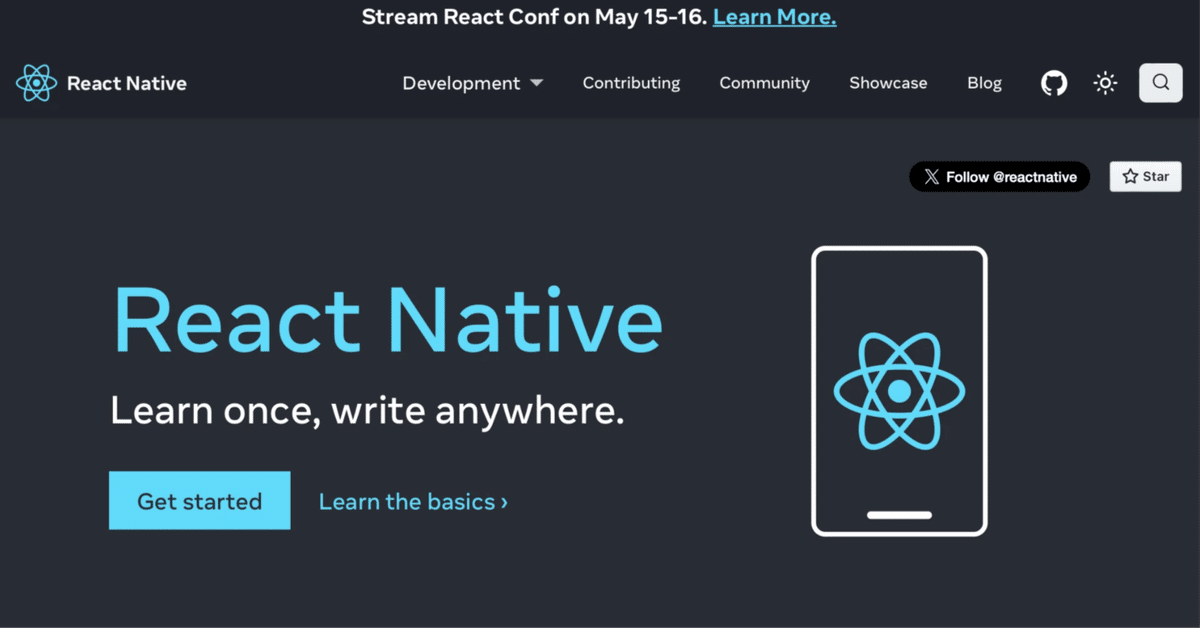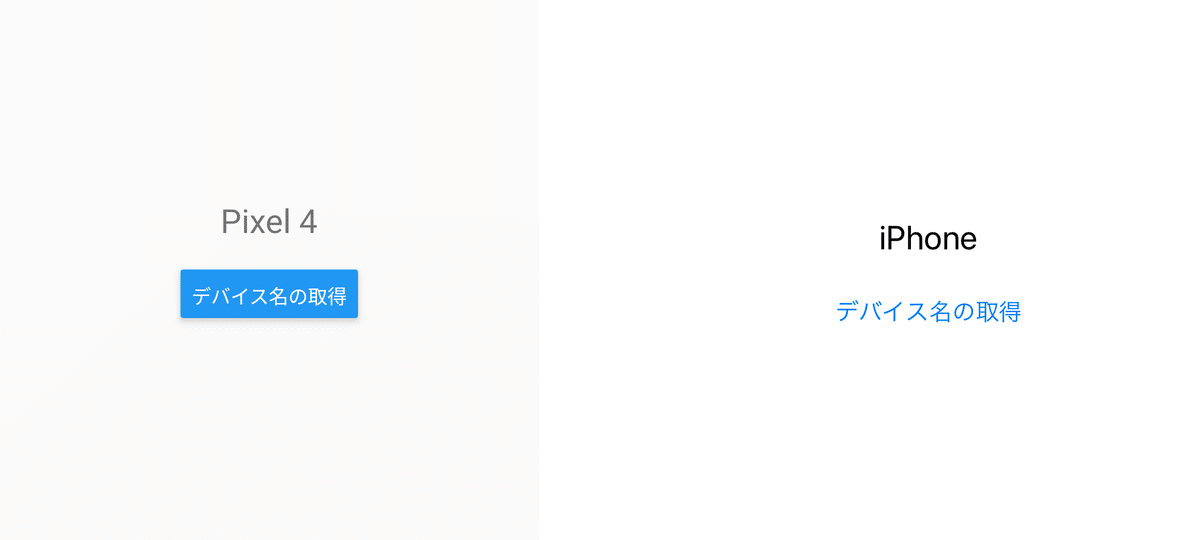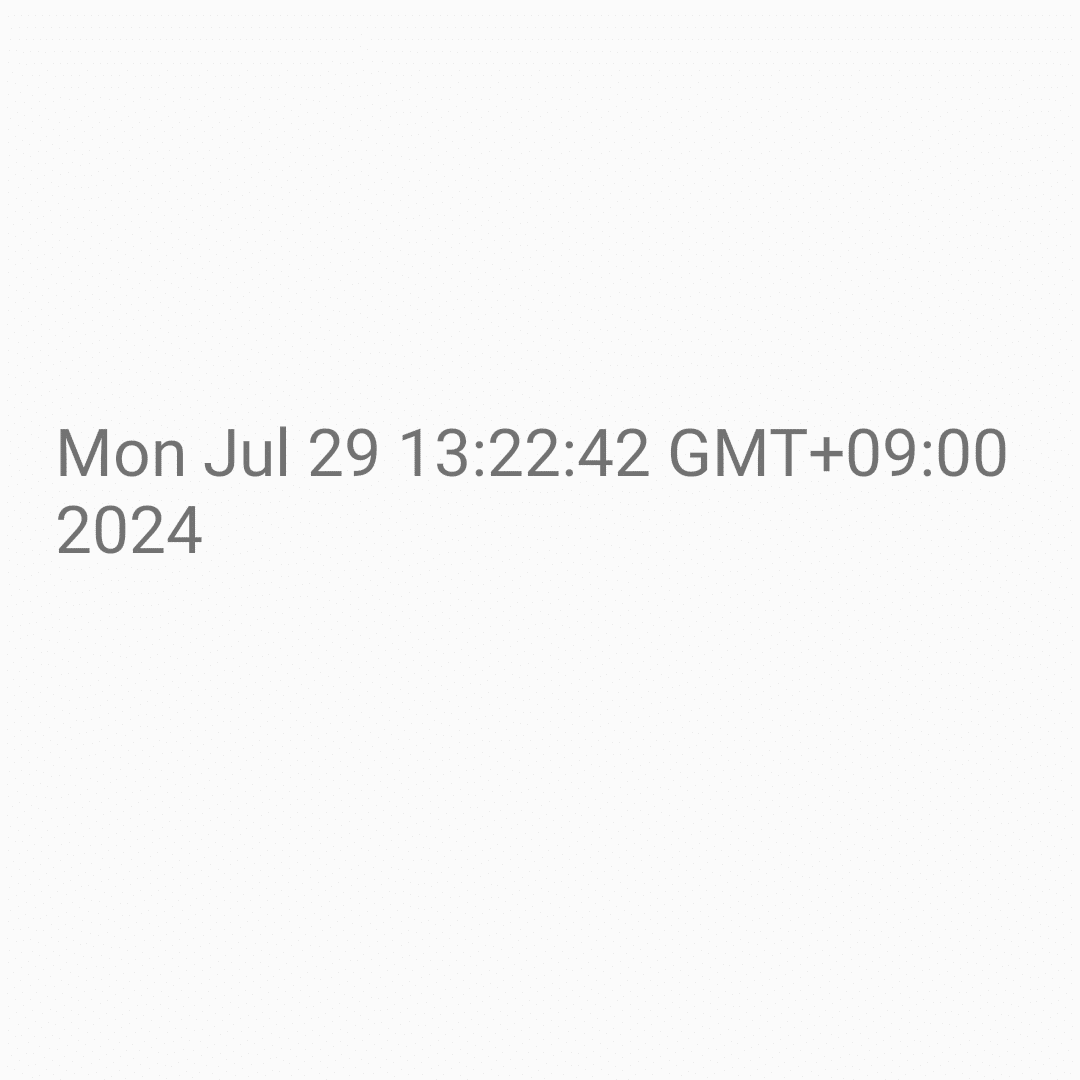
React Native の ネイティブモジュール の使い方
前回
1. ネイティブモジュールの呼び出し
1-1. React Nativeプロジェクトの作成
(1) React Nativeプロジェクトの作成。
npx react-native init my_app
cd my_app1-2. Androidのネイティブモジュールの実装
(1) AndroidStudioでReact Nativeプロジェクトのandroidフォルダを開く。
(2) ネイティブモジュールの実装。
・DeviceNameModule.kt
package com.my_app
import com.facebook.react.bridge.Promise
import com.facebook.react.bridge.ReactApplicationContext
import com.facebook.react.bridge.ReactContextBaseJavaModule
import com.facebook.react.bridge.ReactMethod
// デバイス名モジュール
class DeviceNameModule(reactContext: ReactApplicationContext) : ReactContextBaseJavaModule(reactContext) {
// 名前の取得
override fun getName(): String {
return "DeviceNameModule"
}
// デバイス名の取得
@ReactMethod
fun getDeviceName(promise: Promise) {
try {
val deviceName = android.os.Build.MODEL
promise.resolve(deviceName)
} catch (e: Exception) {
promise.reject("Error", e)
}
}
}(3) ネイティブモジュールをアプリ側に公開。
・DeviceNameModulePackage.kt
package com.my_app
import com.facebook.react.ReactPackage
import com.facebook.react.bridge.ReactApplicationContext
import com.facebook.react.bridge.NativeModule
import com.facebook.react.uimanager.ViewManager
// パッケージ
class DeviceNameModulePackage : ReactPackage {
// ネイティブモジュールの生成
override fun createNativeModules(reactContext: ReactApplicationContext): List<NativeModule> {
return listOf(DeviceNameModule(reactContext))
}
// ビューマネージャの生成
override fun createViewManagers(reactContext: ReactApplicationContext): List<ViewManager<*, *>> {
return emptyList()
}
}・MainApplication.ktの一部
override val reactNativeHost: ReactNativeHost =
object : DefaultReactNativeHost(this) {
override fun getPackages(): List<ReactPackage> =
PackageList(this).packages.apply {
// 自動リンクできないパッケージは、ここで手動で追加できる
// example: add(MyReactNativePackage())
add(DeviceNameModulePackage()) // ★ここに追加
}1-3. iOSのネイティブモジュールの実装
(1) podのインストール。
cd ios
pod install
cd ..(2) Xcodeで「ios」内のworkspaceを開き、署名し、iPhoneにインストールできることを確認。
(3) ネイティブモジュールの実装。
Swiftでネイティブモジュールを実装します。
・DeviceNameModule.swift
import Foundation
import React
// デバイス名モジュール
@objc(DeviceNameModule)
class DeviceNameModule: NSObject, RCTBridgeModule {
// 名前の取得
static func moduleName() -> String! {
return "DeviceNameModule"
}
// モジュールをメインスレッドで初期化する必要があるか
static func requiresMainQueueSetup() -> Bool {
return true
}
// デバイス名の取得
@objc(getDeviceName:rejecter:)
func getDeviceName(resolver: @escaping RCTPromiseResolveBlock, rejecter: @escaping RCTPromiseRejectBlock) {
let deviceName = UIDevice.current.name
if !deviceName.isEmpty {
resolver(deviceName)
} else {
rejecter("Error", "Device name could not be retrieved", nil)
}
}
}
(4) ブリッジヘッダーの設定。
Swiftコードの初回追加時に、ブリッジヘッダー追加ダイアログが開くので、「Create Bridgin Header」ボタンを押します。
・<プロジェクト名>-Bridging-Header.h
#import <React/RCTBridgeModule.h>(5) ネイティブモジュールをアプリ側に公開。
・DeviceNameModule.m
#import <React/RCTBridgeModule.h>
@interface RCT_EXTERN_MODULE(DeviceNameModule, NSObject)
RCT_EXTERN_METHOD(getDeviceName:(RCTPromiseResolveBlock)resolve rejecter:(RCTPromiseRejectBlock)reject)
@end1-4. ネイティブモジュールの呼び出し
(1) 「App.tsx」の編集。
・App.tsx
import React, { useState } from 'react';
import { Button, Text, SafeAreaView } from 'react-native';
// ネイティブモジュールの準備
import { NativeModules } from 'react-native';
const { DeviceNameModule } = NativeModules;
// アプリ
const App: React.FC = () => {
const [message, setMessage] = useState('');
// ボタンクリック時に呼ばれる
const onClick = async () => {
// デバイス名の取得
const deviceName = await DeviceNameModule.getDeviceName()
setMessage(deviceName);
};
return (
<SafeAreaView style={{ flex: 1, justifyContent: 'center', alignItems: 'center' }}>
<Text style={{ fontSize: 24, marginBottom: 20 }}>{message}</Text>
<Button
onPress={onClick}
title="デバイス名の取得"
/>
</SafeAreaView>
);
};
export default App;(2) 実行。
npm start
2. ネイティブモジュールからのイベント通知
2-1. Androidのネイティブモジュールの実装
(1) AndroidStudioでReact Nativeプロジェクトのandroidフォルダを開く。
(2) ネイティブモジュールの実装。
・ClockModule.kt
package com.my_app
import com.facebook.react.bridge.*
import com.facebook.react.modules.core.DeviceEventManagerModule
import java.util.*
import kotlin.concurrent.fixedRateTimer
// ネイティブモジュール
class ClockModule(reactContext: ReactApplicationContext) : ReactContextBaseJavaModule(reactContext) {
private val reactContext: ReactApplicationContext = reactContext
private var timer: Timer? = null
// 名前の取得
override fun getName(): String {
return "ClockModule"
}
// イベントの送信
private fun sendEvent(eventName: String, params: WritableMap?) {
reactContext
.getJSModule(DeviceEventManagerModule.RCTDeviceEventEmitter::class.java)
.emit(eventName, params)
}
// Tickingの開始
@ReactMethod
fun startTicking() {
timer?.cancel()
timer = fixedRateTimer("tickTimer", false, 0L, 1000L) {
val params = Arguments.createMap()
params.putString("message", "" + Date())
sendEvent("TickEvent", params) // イベント名を修正
}
}
// Tickingの停止
@ReactMethod
fun stopTicking() {
timer?.cancel()
timer = null
}
// リスナーの追加
@ReactMethod
fun addListener(eventName: String) {
}
// リスナーの削除
@ReactMethod
fun removeListeners(count: Int) {
}
}
(3) ネイティブモジュールをアプリ側に公開。
・ClockModulePackage.kt
package com.my_app
import com.facebook.react.ReactPackage
import com.facebook.react.bridge.ReactApplicationContext
import com.facebook.react.uimanager.ViewManager
import com.facebook.react.bridge.NativeModule
// パッケージ
class ClockModulePackage : ReactPackage {
// ネイティブモジュールの生成
override fun createNativeModules(reactContext: ReactApplicationContext): List<NativeModule> {
return listOf(ClockModule(reactContext))
}
// ビューマネージャの生成
override fun createViewManagers(reactContext: ReactApplicationContext): List<ViewManager<*, *>> {
return emptyList()
}
}・MainApplication.ktの一部
override val reactNativeHost: ReactNativeHost =
object : DefaultReactNativeHost(this) {
override fun getPackages(): List<ReactPackage> =
PackageList(this).packages.apply {
// 自動リンクできないパッケージは、ここで手動で追加できる
// example: add(MyReactNativePackage())
add(MyEventEmitterPackage()) // ★ここに追加
}2-2. iOSのネイティブモジュールの実装
(1) podのインストール。
cd ios
pod install
cd ..(2) Xcodeで「ios」内のworkspaceを開き、署名し、iPhoneにインストールできることを確認。
(3) ネイティブモジュールの実装。
・MyEventEmitter.swift
import Foundation
import React
// ネイティブモジュール
@objc(ClockModule)
class ClockModule: RCTEventEmitter {
private var timer: Timer?
// サーポートイベントの取得
override func supportedEvents() -> [String]! {
return ["TickEvent"]
}
// Tickingの開始
@objc
func startTicking() {
stopTicking()
DispatchQueue.main.async {
self.timer = Timer.scheduledTimer(timeInterval: 1.0, target: self, selector: #selector(self.sendTickEvent), userInfo: nil, repeats: true)
RunLoop.current.add(self.timer!, forMode: .common)
}
}
// Tickingの停止
@objc
func stopTicking() {
timer?.invalidate()
timer = nil
}
// イベントの送信
@objc
private func sendTickEvent() {
let params: [String: Any] = ["message": "\(Date())"]
sendEvent(withName: "TickEvent", body: params)
}
// メインキューの利用
override static func requiresMainQueueSetup() -> Bool {
return true
}
}
(4) ブリッジヘッダーの設定。
Swiftコードの初回追加時に、ブリッジヘッダー追加ダイアログが開くので、「Create Bridgin Header」ボタンを押します。
・<プロジェクト名>-Bridging-Header.h
#import <React/RCTBridgeModule.h>(5) ネイティブモジュールをアプリ側に公開。
・ClockModule.m
#import <React/RCTBridgeModule.h>
#import <React/RCTEventEmitter.h>
@interface RCT_EXTERN_MODULE(ClockModule, RCTEventEmitter)
RCT_EXTERN_METHOD(startTicking)
RCT_EXTERN_METHOD(stopTicking)
@end2-3. ネイティブモジュールからのイベント通知
(1) 「App.tsx」の編集。
・App.tsx
import React, { useState, useEffect } from 'react';
import { Text, SafeAreaView, NativeEventEmitter, NativeModules } from 'react-native';
// ネイティブモジュールの準備
const { ClockModule } = NativeModules;
const eventEmitter = new NativeEventEmitter(ClockModule);
// アプリ
const App: React.FC = () => {
const [message, setMessage] = useState('None');
// 初期化
useEffect(() => {
// イベントリスナーの追加
const subscription = eventEmitter.addListener('TickEvent', (event) => {
setMessage(event.message);
});
// Tickingの開始
ClockModule.startTicking();
// 後処理
return () => {
// イベントリスナーの削除
subscription.remove();
// Tickingの停止
ClockModule.stopTicking();
};
}, []);
// UI
return (
<SafeAreaView style={{ flex: 1, justifyContent: 'center', alignItems: 'center' }}>
<Text style={{ fontSize: 24, marginBottom: 20 }}>{message}</Text>
</SafeAreaView>
);
};
export default App;
(2) 実行。
npm start
3. カスタムビューの利用
3-1. Androidのカスタムビューの実装
(1) AndroidStudioでReact Nativeプロジェクトのandroidフォルダを開く。
(2) カスタムビューの実装。
「MainApplication.kt」が存在するフォルダに次のコードを追加します。
・MyCustomView.kt
package com.my_app
import android.content.Context
import android.widget.FrameLayout
import android.widget.TextView
import android.view.Gravity
// カスタムビュー
class MyCustomView(context: Context) : FrameLayout(context) {
private val textView: TextView
init {
textView = TextView(context).apply {
text = "MyCustomView"
gravity = Gravity.CENTER
}
addView(textView)
}
// テキストの指定
fun setText(newText: String) {
textView.text = newText
}
}(3) カスタムビューマネージャの実装。
・MyCustomViewManager.kt
package com.my_app
import com.facebook.react.uimanager.SimpleViewManager
import com.facebook.react.uimanager.ThemedReactContext
import com.facebook.react.uimanager.annotations.ReactProp
// カスタムビューマネージャ
class MyCustomViewManager : SimpleViewManager<MyCustomView>() {
// 名前の取得
override fun getName(): String {
return "MyCustomView"
}
// ビューインスタンスの取得
override fun createViewInstance(reactContext: ThemedReactContext): MyCustomView {
return MyCustomView(reactContext)
}
// テキストの指定
@ReactProp(name = "text")
fun setText(view: MyCustomView, text: String) {
view.setText(text)
}
}(4) カスタムビューをアプリ側に公開。
・MyCustomViewPackage.kt
package com.my_app
import com.facebook.react.ReactPackage
import com.facebook.react.bridge.NativeModule
import com.facebook.react.bridge.ReactApplicationContext
import com.facebook.react.uimanager.ViewManager
// パッケージ
class MyCustomViewPackage : ReactPackage {
// ネイティブモジュールの生成
override fun createNativeModules(reactContext: ReactApplicationContext): List<NativeModule> {
return emptyList()
}
// ビューマネージャの生成
override fun createViewManagers(reactContext: ReactApplicationContext): List<ViewManager<*, *>> {
return listOf(MyCustomViewManager())
}
}・MainApplication.ktの一部
override val reactNativeHost: ReactNativeHost =
object : DefaultReactNativeHost(this) {
override fun getPackages(): List<ReactPackage> =
PackageList(this).packages.apply {
// 自動リンクできないパッケージは、ここで手動で追加できる
// example: add(MyReactNativePackage())
add(MyCustomViewPackage()) // ★ここに追加
}3-2. iOSのカスタムビューの実装
(1) podのインストール。
cd ios
pod install
cd ..(2) Xcodeで「ios」内のworkspaceを開き、署名し、iPhoneにインストールできることを確認。
(3) カスタムビューの実装。
・MyCustomView.swift
import UIKit
// カスタムビュー
class MyCustomView: UIView {
private let label: UILabel
// 初期化
override init(frame: CGRect) {
label = UILabel(frame: .zero)
super.init(frame: frame)
setupView()
}
// 初期化
required init?(coder: NSCoder) {
label = UILabel(frame: .zero)
super.init(coder: coder)
setupView()
}
// ビューのセットアップ
private func setupView() {
// ラベル
label.text = "MyCustomView"
label.textAlignment = .center
label.translatesAutoresizingMaskIntoConstraints = false
self.addSubview(label)
// 制約
NSLayoutConstraint.activate([
label.centerXAnchor.constraint(equalTo: self.centerXAnchor),
label.centerYAnchor.constraint(equalTo: self.centerYAnchor)
])
}
// テキストの指定
@objc var text: String = "MyCustomView" {
didSet {
label.text = text
}
}
}(4) ブリッジヘッダーの設定。
Swiftコードの初回追加時に、ブリッジヘッダー追加ダイアログが開くので、「Create Bridgin Header」ボタンを押します。
・<プロジェクト名>-Bridging-Header.h
#import "React/RCTViewManager.h"(5) カスタムビューマネージャの実装。
・MyCustomViewManager.swift
import UIKit
import React
// カスタムビューマネージャ
@objc(MyCustomViewManager)
class MyCustomViewManager: RCTViewManager {
// 名前の取得
override static func moduleName() -> String! {
return "MyCustomView"
}
// ビューインスタンスの取得
override func view() -> UIView! {
return MyCustomView()
}
// テキストの指定
@objc func setText(_ node: NSNumber, text: String) {
DispatchQueue.main.async {
let component = self.bridge.uiManager.view(forReactTag: node) as! MyCustomView
component.text = text
}
}
}(6) カスタムビューをアプリ側に公開。
・MyCustomViewManager.m
#import <React/RCTViewManager.h>
@interface RCT_EXTERN_MODULE(MyCustomViewManager, RCTViewManager)
RCT_EXPORT_VIEW_PROPERTY(text, NSString)
@end3-3. カスタムビューの利用
(1) 「App.tsx」の編集。
・App.tsx
import React from 'react';
import { requireNativeComponent, ViewStyle, View } from 'react-native';
// カスタムビューの準備
interface MyCustomViewProps {
style?: ViewStyle;
text?: String;
}
const MyCustomView = requireNativeComponent<MyCustomViewProps>('MyCustomView');
// アプリのメインコンポーネント
const App = () => {
return (
<View style={{ flex: 1 }}>
<MyCustomView style={{ width: '100%', height: '100%' }} text="New Text" />
</View>
);
};
export default App;(2) 実行。
npm start
【おまけ】 デバッグ
Android側のデバッグ出力は、通常のAndroid開発と同様、Log.d()で出力してlogcatで確認します。
androud.util.Log.d("debug", "A>>>");adb logcat -s debug